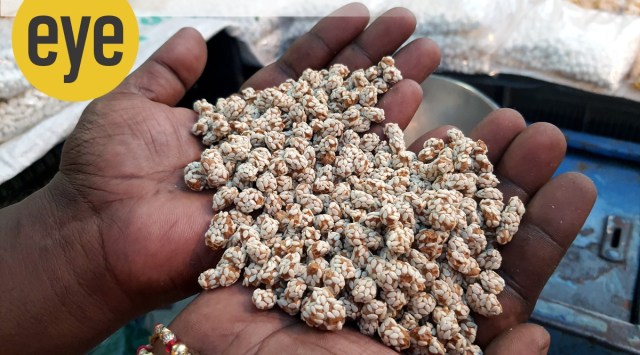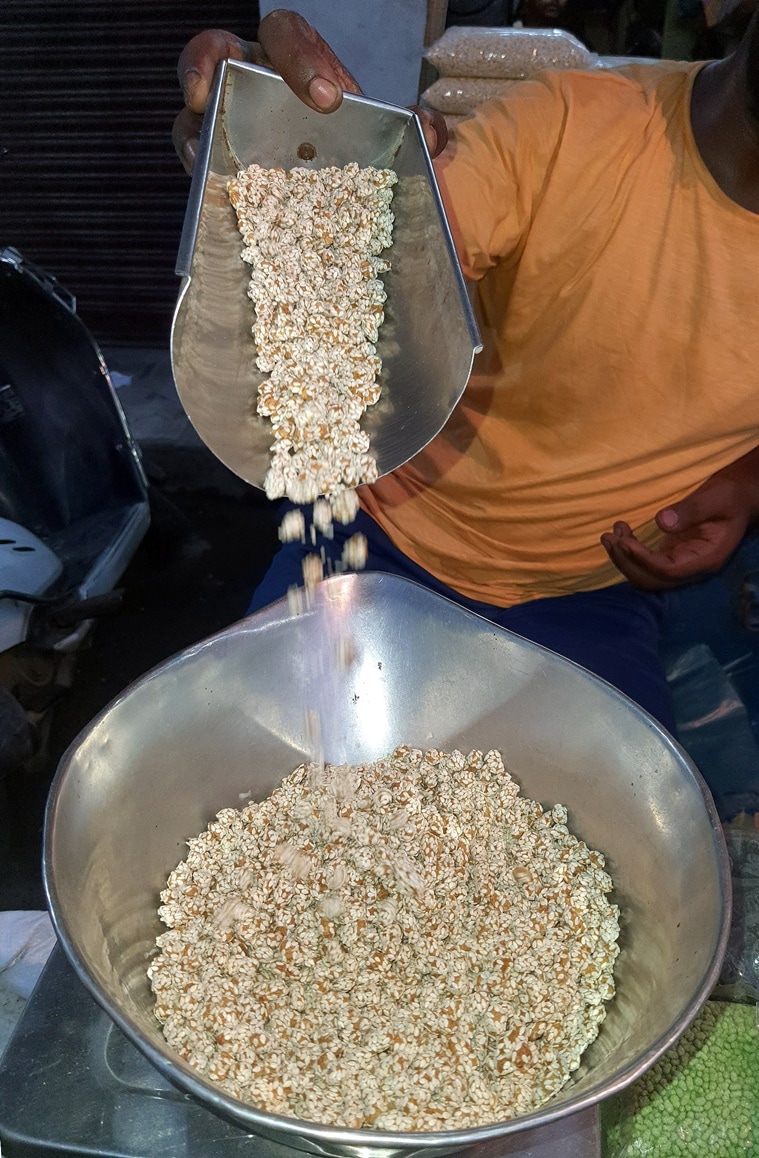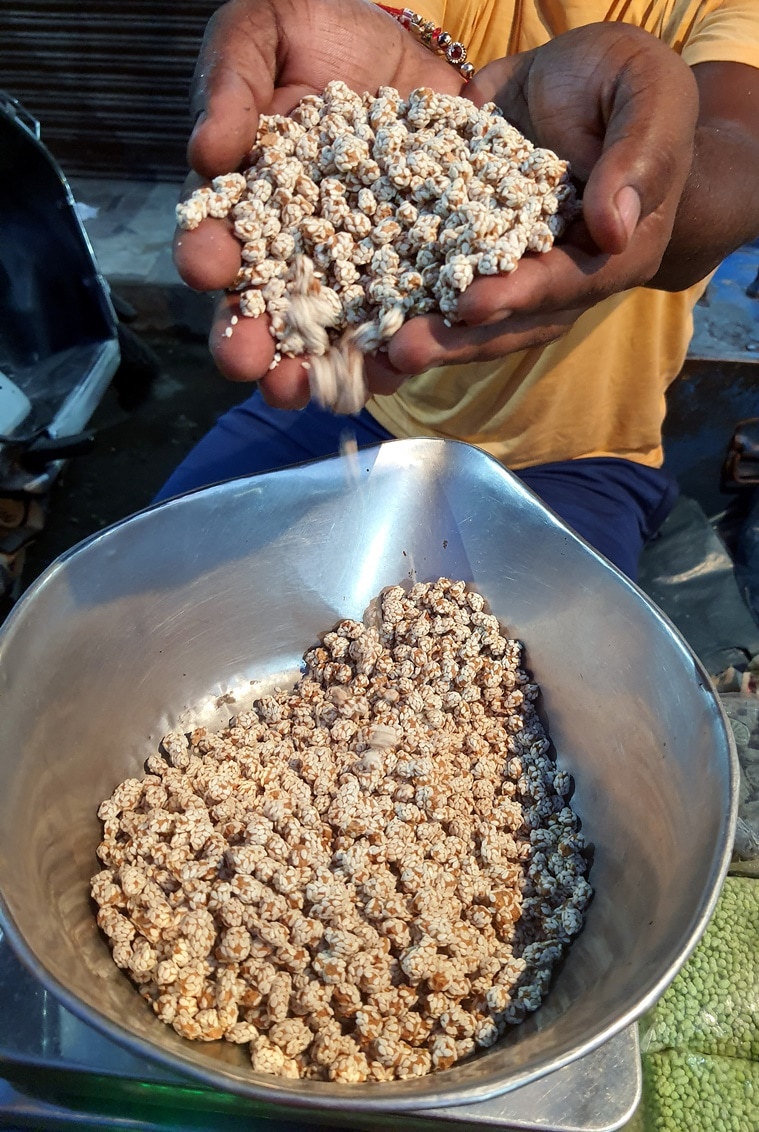How India has always distributed revdis as an act of benevolence and inclusivity
On the legacy of the unassuming north Indian sweet candy revdi and its journey from festivals to the political arena
 Revdi (Credit: Rana Simranjit Singh)
Revdi (Credit: Rana Simranjit Singh)The Prime Minister’s recent comment on political parties doling out “revdis”, or free/subsidised goods and services, basically freebies, in lieu of votes, got me thinking about the sweet/candy in contention.
With the onslaught of cheap packaged chocolates, revdi is now losing its relevance. It was once a most coveted gift with good shelf-life and portability. Revdi, in fact, is a surviving indicator of the fine sugar-craft of ancient India since the time when sugar wasn’t even known to the Western world.
Buy Now | Our best subscription plan now has a special price
The original revdi culture was rooted in a spirit of togetherness — care for the less fortunate members of the society and lasting nourishment for all. The harvest festivals of Lohri and Makar Sankranti indicate the relevance of revdi and demonstrate the distribution of the best of seasonal food in accordance with nature, taking care of our ecosystem as a whole and not consuming it with a sense of entitlement. Offering a handful of revdi, peanuts and popped grains to the fire on this day is like being one with elements of nature, completing the cycle of life, a philosophy unique to nature-worshipping cultures.
 The original revdi culture was rooted in a spirit of togetherness — care for the less fortunate members of the society. (Credit: Rana Simranjit Singh)
The original revdi culture was rooted in a spirit of togetherness — care for the less fortunate members of the society. (Credit: Rana Simranjit Singh)
Giving food to the needy is a tradition all religions follow; food gifts, hosting community meals are central to festivities around the world. In addition to that, in India, festivals are associated with certain types of foods/ingredients, and that has helped preserve some of our ancient culinary wisdom and ways of cooking. For instance, some wild foods are brought to the plate only once a year as part of a ritualistic meal even though we might have forgotten how to utilise that food in our contemporary kitchens.
Take, for example, the Hala Shashti. Celebrated two days prior to Janmashtami, is an agrarian festival, meant to give the hala (plough) a much-needed rest. Several wild leafy greens and wild rice are cooked for the ritualistic meal in central India on this day. While the plough is worshipped, the food includes dried mahua flowers, which has otherwise vanished from our plates. Wild foods and their foragers have survived because of smaller festivals, since Brahminical traditions have focused on the major festivals, consuming foods of the rich and aristocratic, laden with dried-fruits, ghee, aromatic rice varieties, choicest fruits like coconut and bananas — everything that’s a cash crop.
 With the onslaught of cheap packaged chocolates, revdi is now losing its relevance. (Credit: Rana Simranjit Singh)
With the onslaught of cheap packaged chocolates, revdi is now losing its relevance. (Credit: Rana Simranjit Singh)
Any consumerist economy profits from these majoritarian festivals, in which now chocolates and candies feature more regularly, alongside the Indian sweetmeats which are dependent on mass-scale monoculture crops and dairy. The smaller agrarian festivals, those celebrated by the masses and in rural India, have helped preserve and value not just wild foods and leafy greens but also the worship of nature — snakes and mongooses for Nag Panchami and Noli Nom, and the banyan tree, for the summer festival Vat-Savitri puja, where women worship the tree, water it, sing folk songs to it, tie a raksha (protection) thread, and seek its benevolence. Fruits, an earthen water-pot and a hand-held palm-leaf fan are donated to the poor on this day.
The most popular food ingredients, part of the food-giveaway traditions, are sesame and jaggery in some form. Both are grown pan-India and are also consumed for their health-boosting properties. Especially in the winter months, the concoction is warming. At Makar Sankranti, laddus, gajak and chikkis of sesame and jaggery are consumed in abundance and gifted to loved ones and the needy, along with rice, pulses and warm clothing, in the Indo-Gangetic plains.
 The harvest festivals of Lohri and Makar Sankranti indicate the relevance of revdi and demonstrate the distribution of the best of seasonal food in accordance with nature. (Credit: Rana Simranjit Singh)
The harvest festivals of Lohri and Makar Sankranti indicate the relevance of revdi and demonstrate the distribution of the best of seasonal food in accordance with nature. (Credit: Rana Simranjit Singh)
That a charred lump of sesame dating to 2000 BC in Harappa was discovered, along with burnt grains of wheat and peas may indicate that the ritual burning of sesame and other grains is a tradition that predates any of the idol worship and Brahmanical ways of celebrating a festival and survives in the form of Lohri.
Incidentally, the tradition of distributing sesame-and-jaggery preparations, be it revdi, chikki, tilkut or laddu, is rooted in the ancient belief that the gift of sesame is a superior one — it produces everlasting merit, according to the writings of food historian KT Achaya, who quotes the Mahabharata. Distributing revdis to the loved ones and needy, thus, is a deeply-rooted traditions and has a well-meaning benevolent approach towards all.
 Distributing revdis to the loved ones and needy, thus, is a deeply-rooted traditions and has a well-meaning benevolent approach towards all. (Credit: Rana Simranjit Singh)
Distributing revdis to the loved ones and needy, thus, is a deeply-rooted traditions and has a well-meaning benevolent approach towards all. (Credit: Rana Simranjit Singh)
Achaya in his book A Historical Dictionary of Indian Food (1998) mentions the Greek writer Aristobulus, who accompanied Alexander the Great on his campaigns, describe witnessing at the marketplaces in India the presence of something like revdi, made with jaggery. He writes that Brahmins helped themselves to several cakes of “sesamum and honey” without paying for them (in the 6th century BC, sugarcane products were unknown outside of India and an unaware Aristobulus mistook the sweetener for honey), clearly indicating that the Brahminical entitlement has been continuing only for about 3,000 years while evidence of revdis being distributed as an act of benevolence has been an older, inclusive tradition.
Sangeeta Khanna is a Dehradun-based food and nutrition blogger, consultant and writer
- 01
- 02
- 03
- 04
- 05































